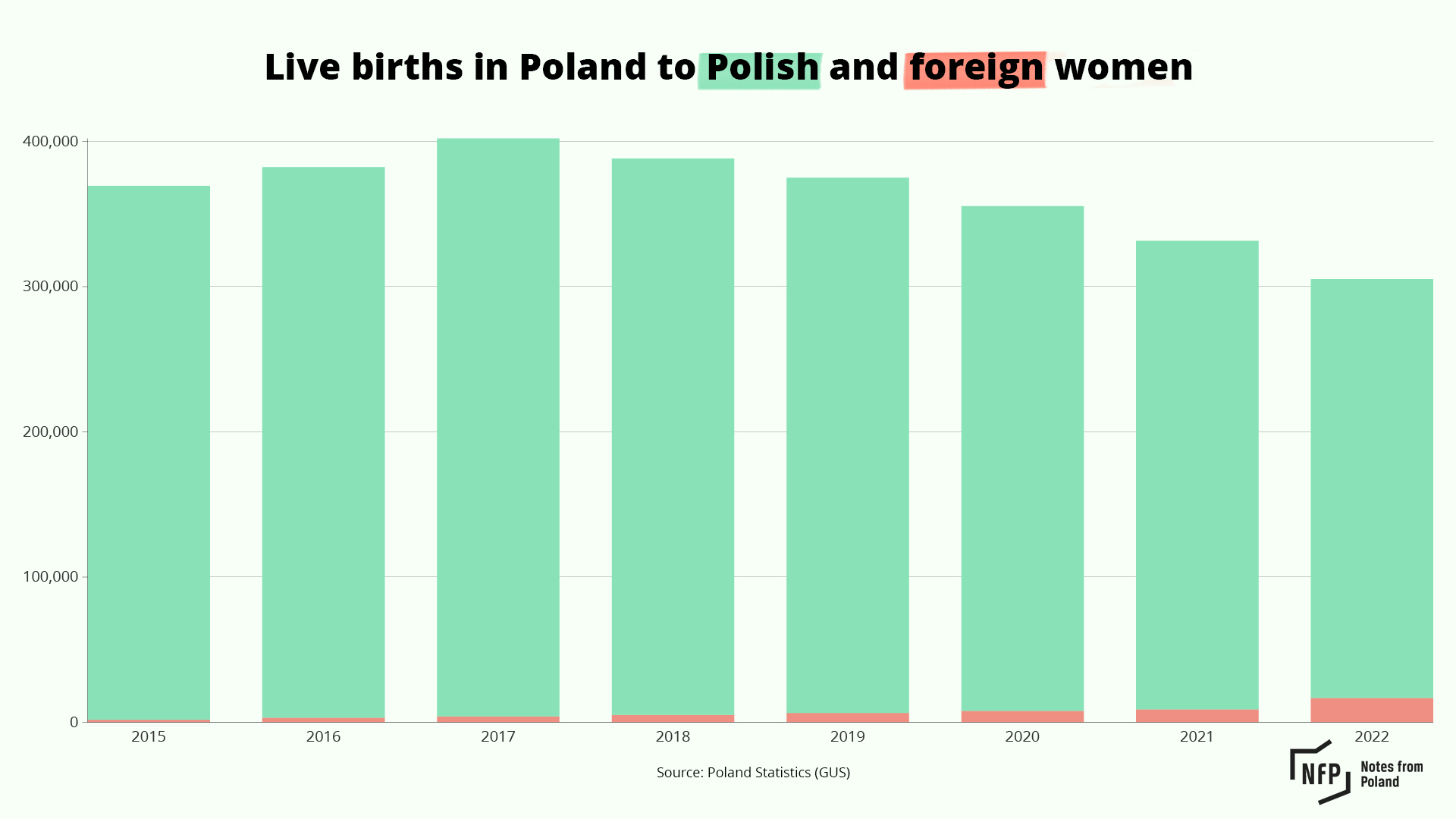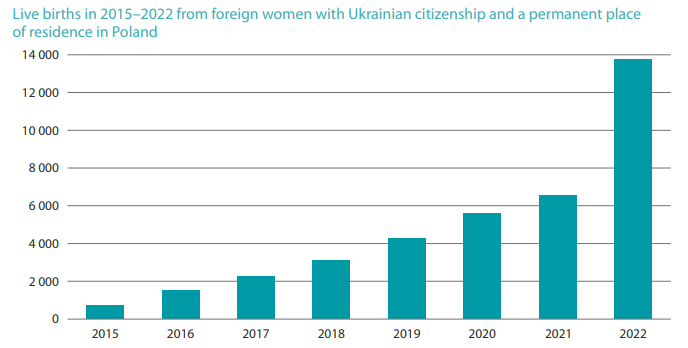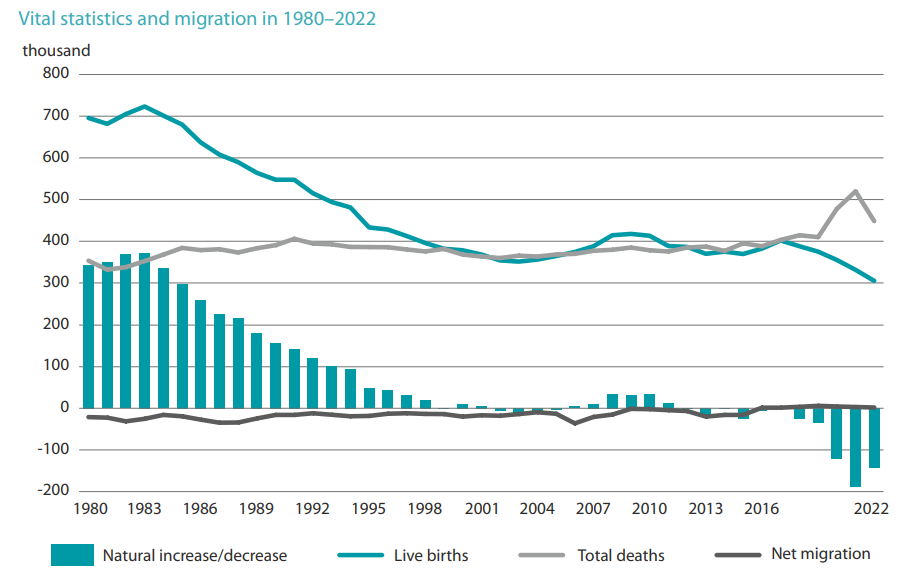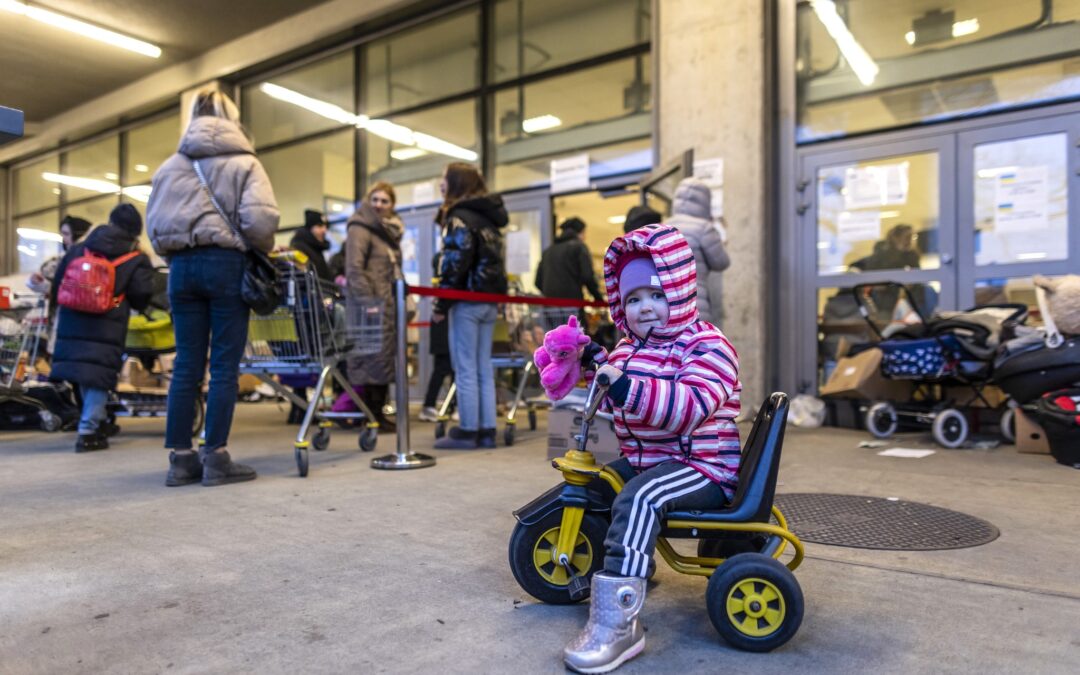The number of births to foreign women in Poland doubled last year, with mothers from abroad now responsible for 5.5% of births. Ukrainians made up the vast majority of that figure.
However, that rise was not enough to compensate for a continued decline in the overall number of births, with Statistics Poland (GUS), the state agency that released the figures, warning that Poland has “entered a period of demographic crisis”.

There were 305,132 live births recorded in Poland last year, the lowest figure since the Second World War. Of those, 16,711 (5.5%) were from foreign women with permanent residence in Poland. That was up from 8,970 (2.7%) in 2021.
Among the foreign women who gave birth, 82% were citizens of Ukraine. The next largest groups were Belarusians (4.4%), Russians (1.5%), Vietnamese (1.4%), Georgians (1%), Moldovans (0.8%) and Indians (0.7%).
The number of children born in Poland to Ukrainian women in 2022, at 13,738, was double the figure recorded in 2021. Last year saw millions of Ukrainian refugees – almost all of them women and children – flee to Poland following Russia’s invasion in February.

Source: Demographic situation in Poland up to 2022, Statistics Poland (GUS)
Even before the influx of refugees, Poland was experiencing levels of immigration unprecedented in its history and among the highest in Europe. It has issued more first-residence permits to immigrants from outside the European Union than any other member state for the last five years running.
However, a rapidly declining birth rate, as well as emigration and a major spike in the mortality rate during the COVID-19 pandemic, have resulted in Poland’s population falling in recent years. Last year it dropped to 37.77 million, down from 37.91 million in 2021.
“The decreased number of births recorded in 2022 confirms that Poland has entered another demographic crisis,” wrote GUS.
The agency notes that Poland also experienced a temporary demographic crisis from 1997-2007 but adds that “the current one may be longer” given trends in births, mortality, life expectancy, migration and marriages.

Source: Demographic situation in Poland up to 2022, Statistics Poland (GUS)

Notes from Poland is run by a small editorial team and published by an independent, non-profit foundation that is funded through donations from our readers. We cannot do what we do without your support.
Main image credit: European Union/Wojtek Radwanski (under CC BY-NC-ND 2.0)

Daniel Tilles is editor-in-chief of Notes from Poland. He has written on Polish affairs for a wide range of publications, including Foreign Policy, POLITICO Europe, EUobserver and Dziennik Gazeta Prawna.



















